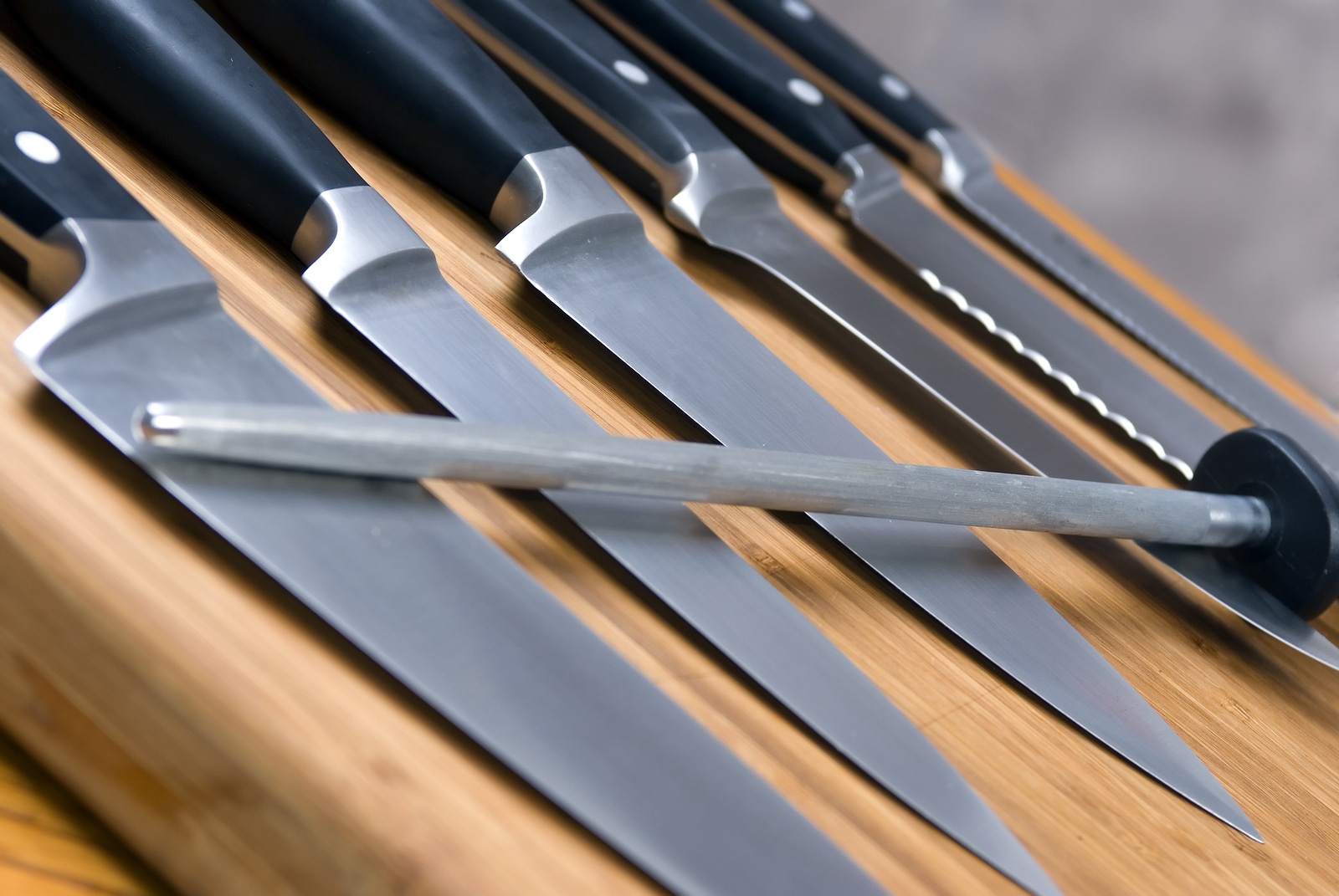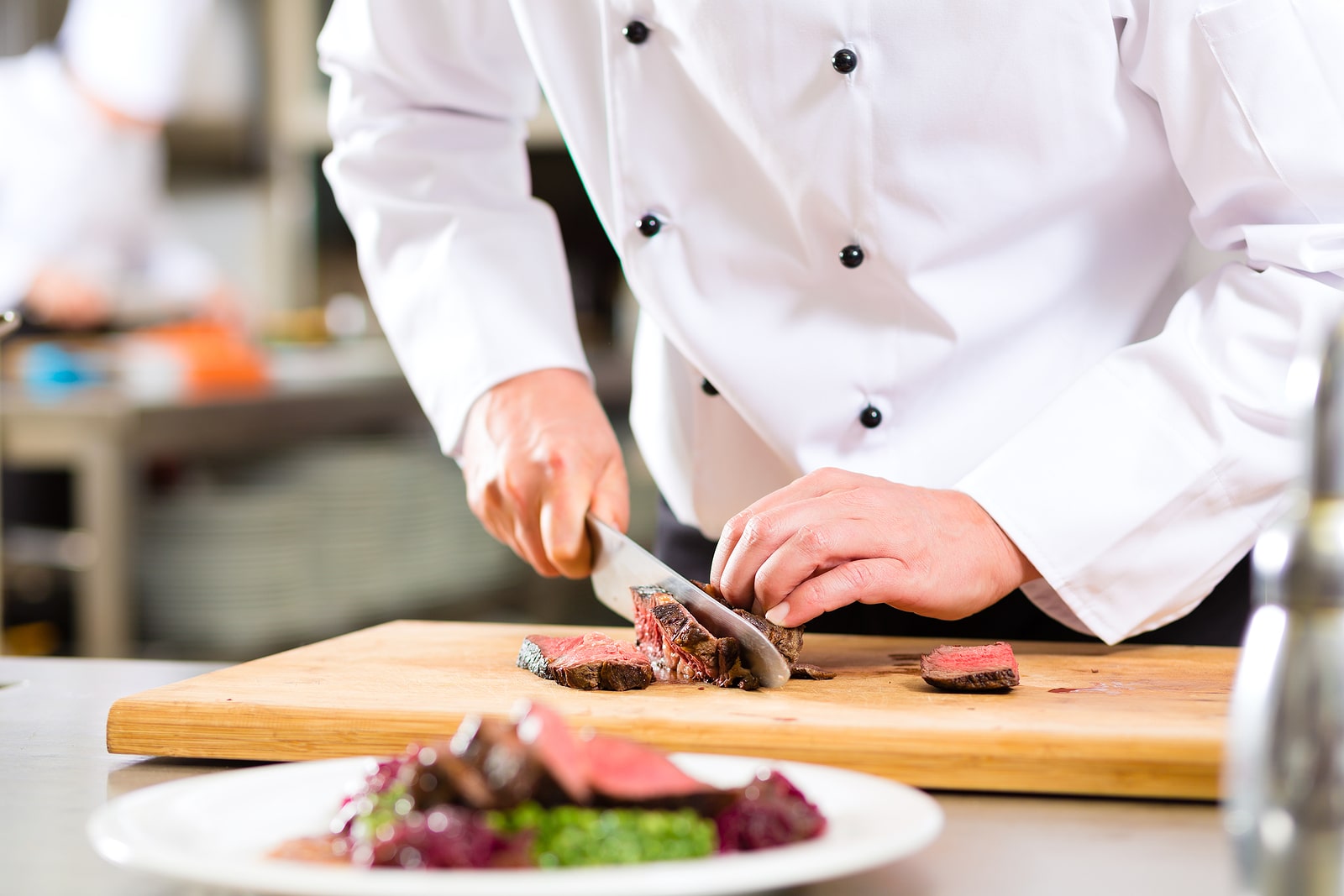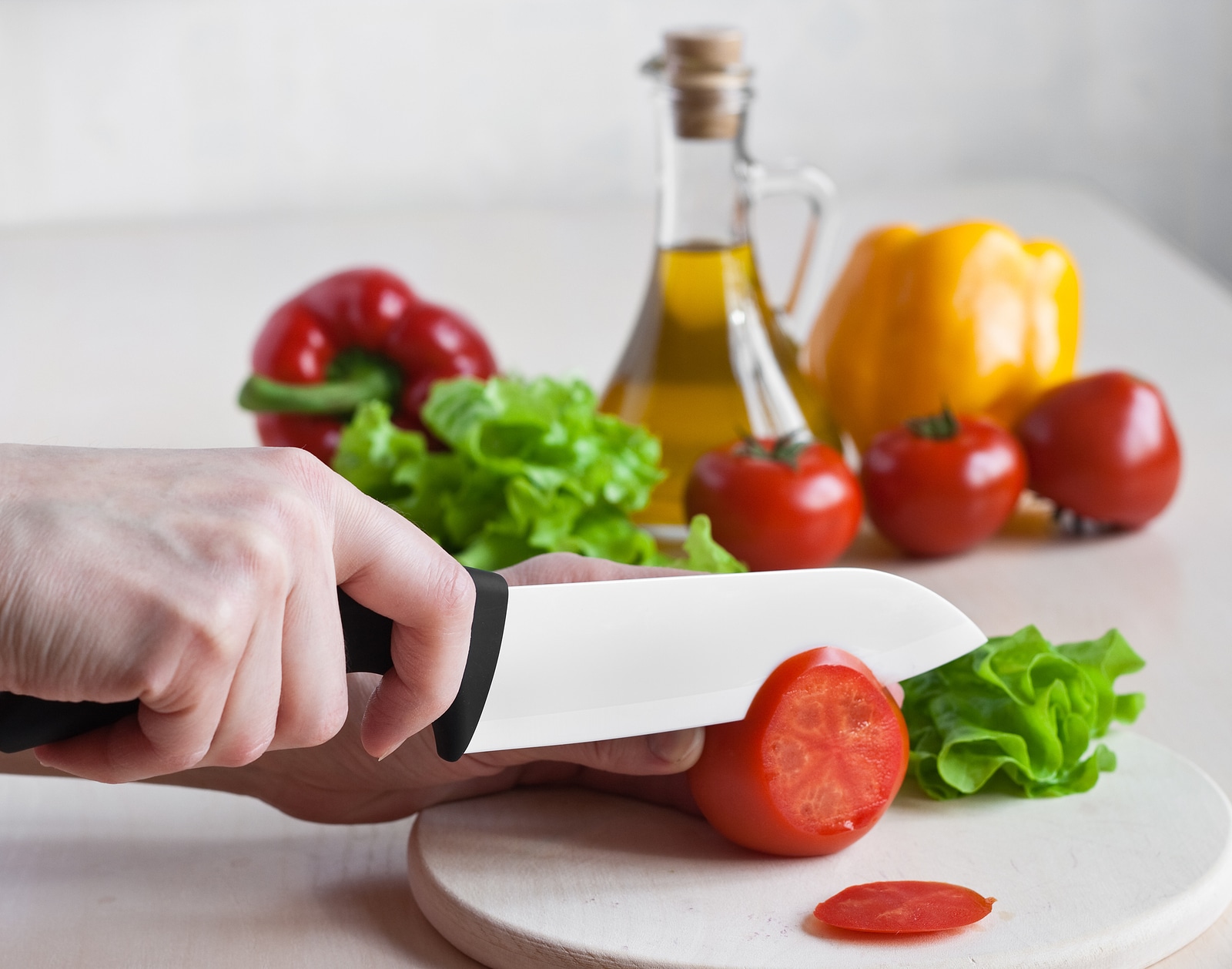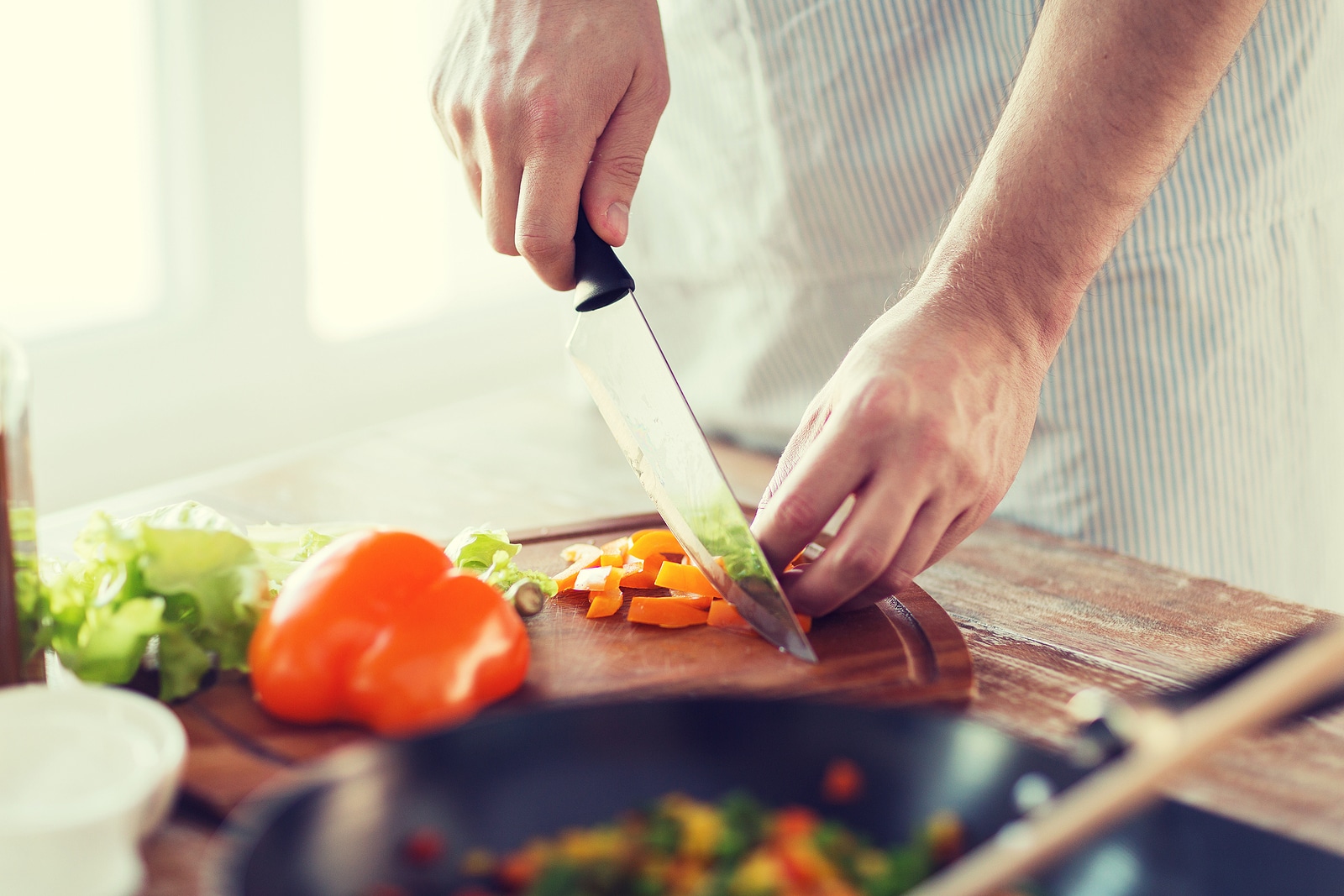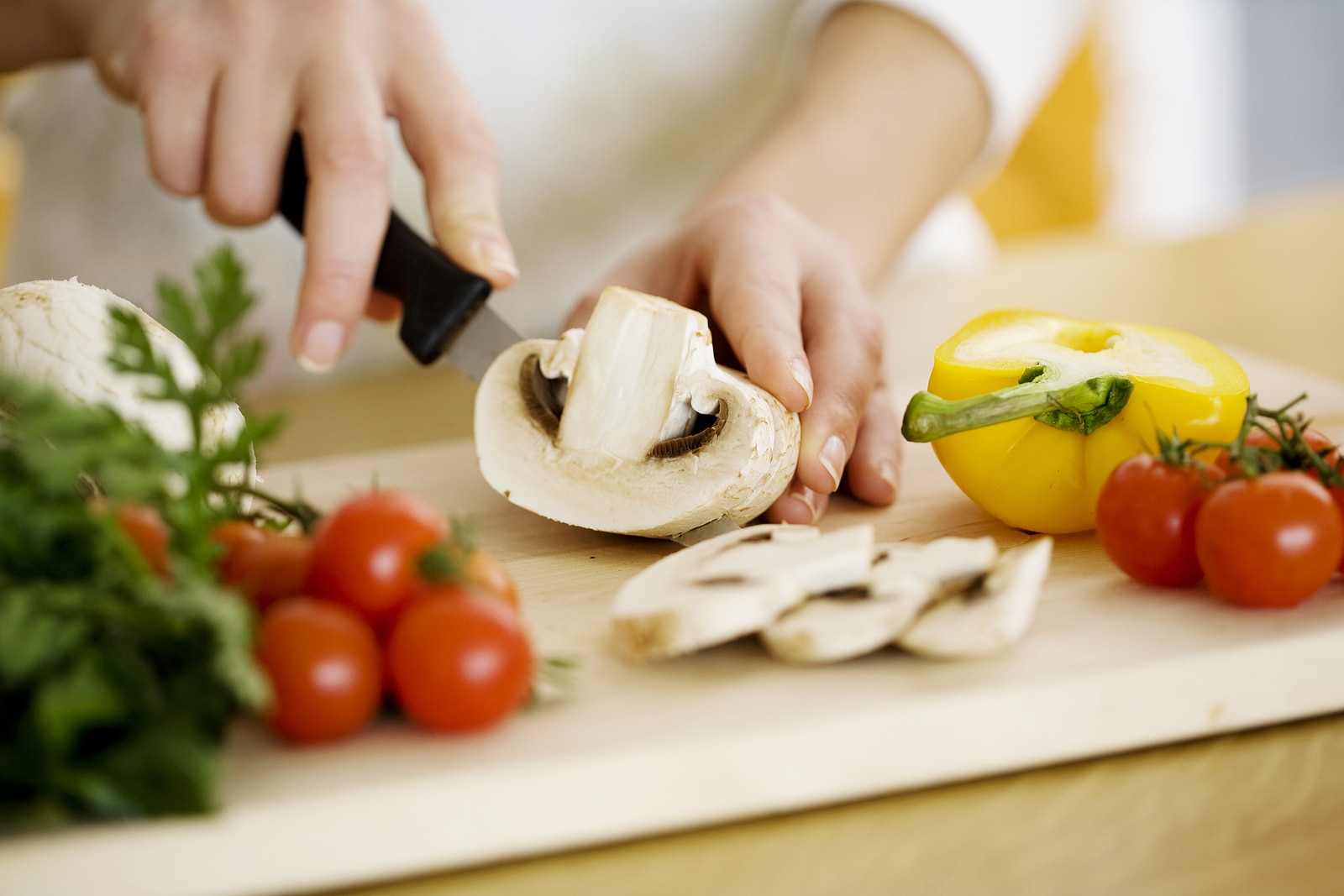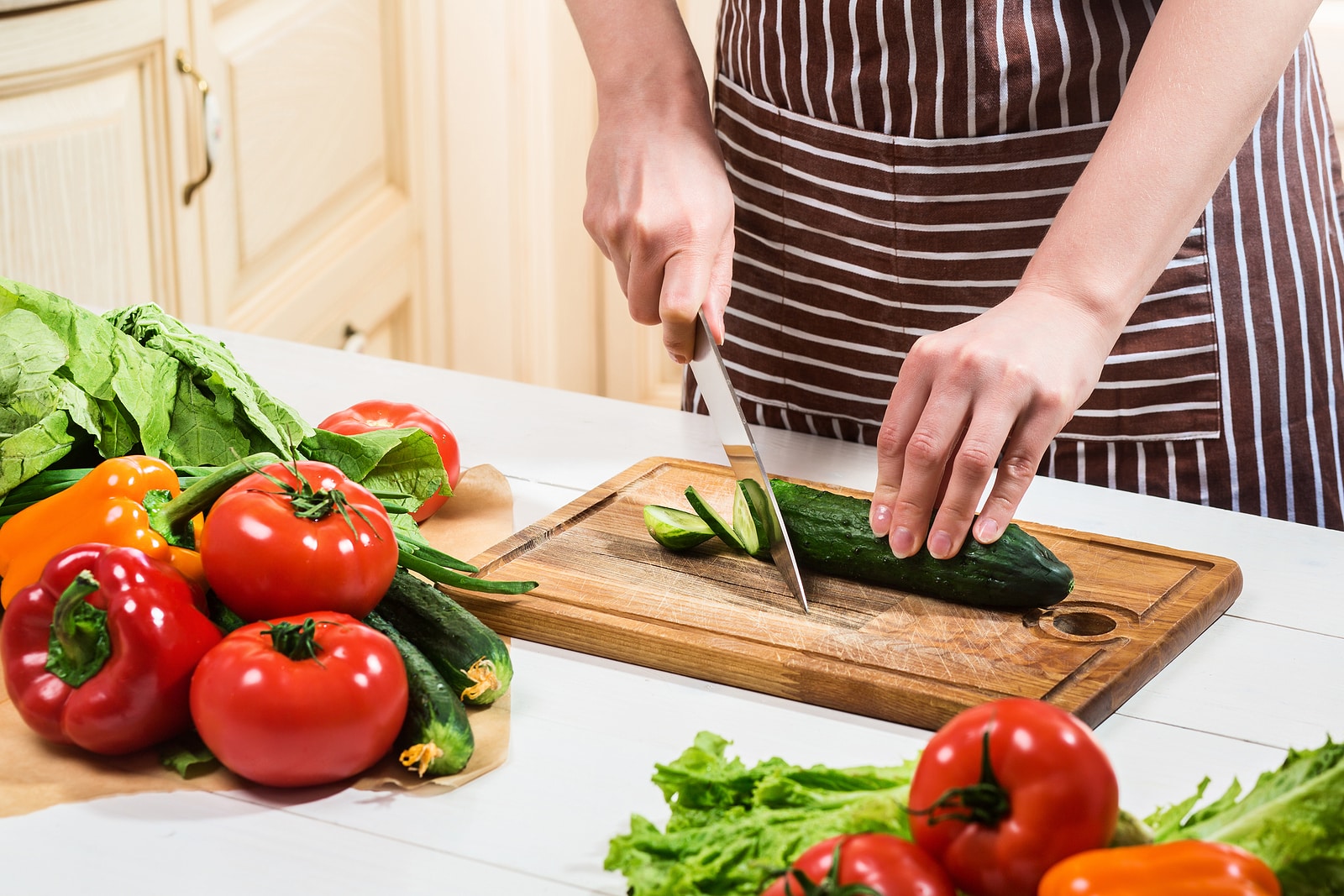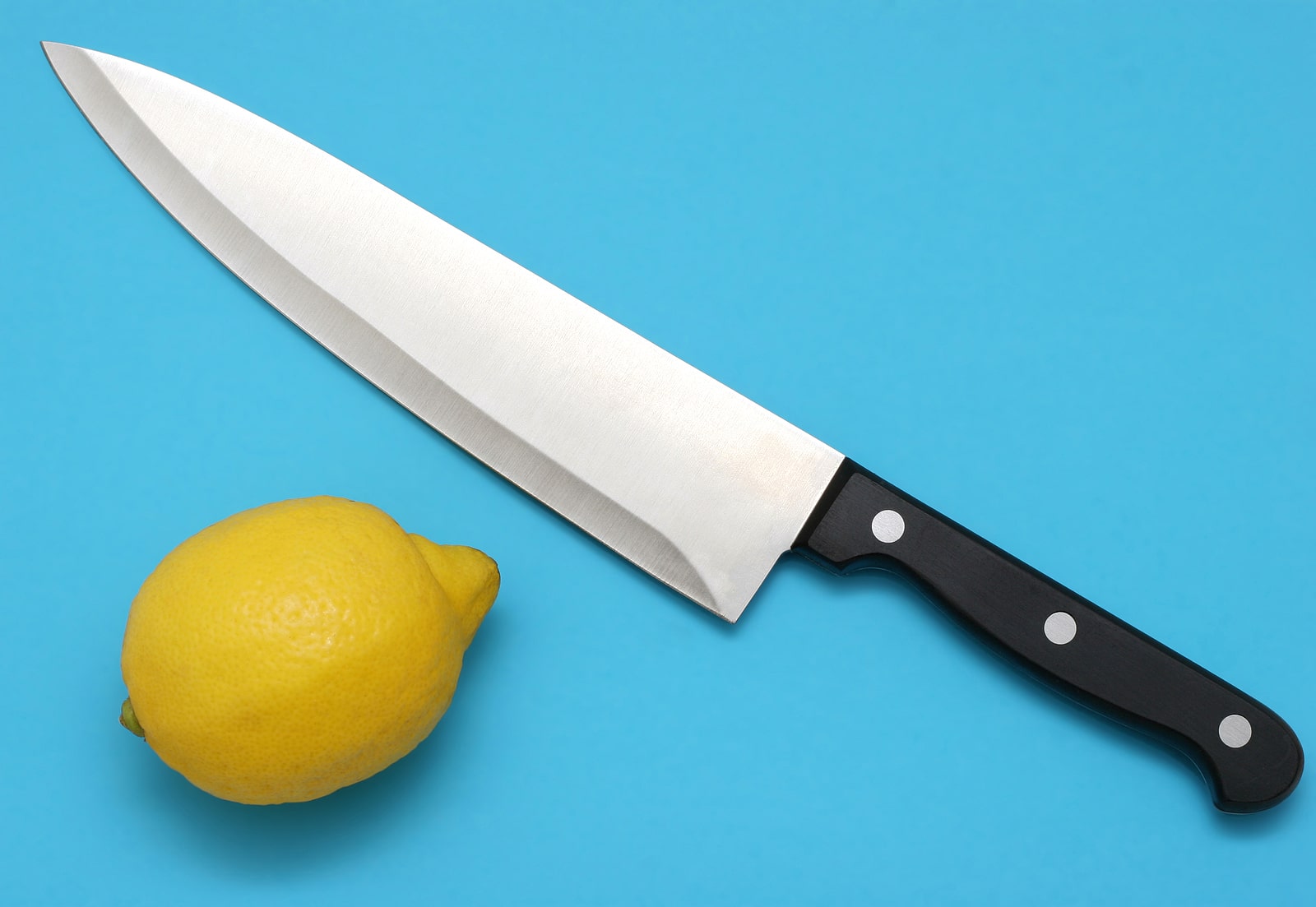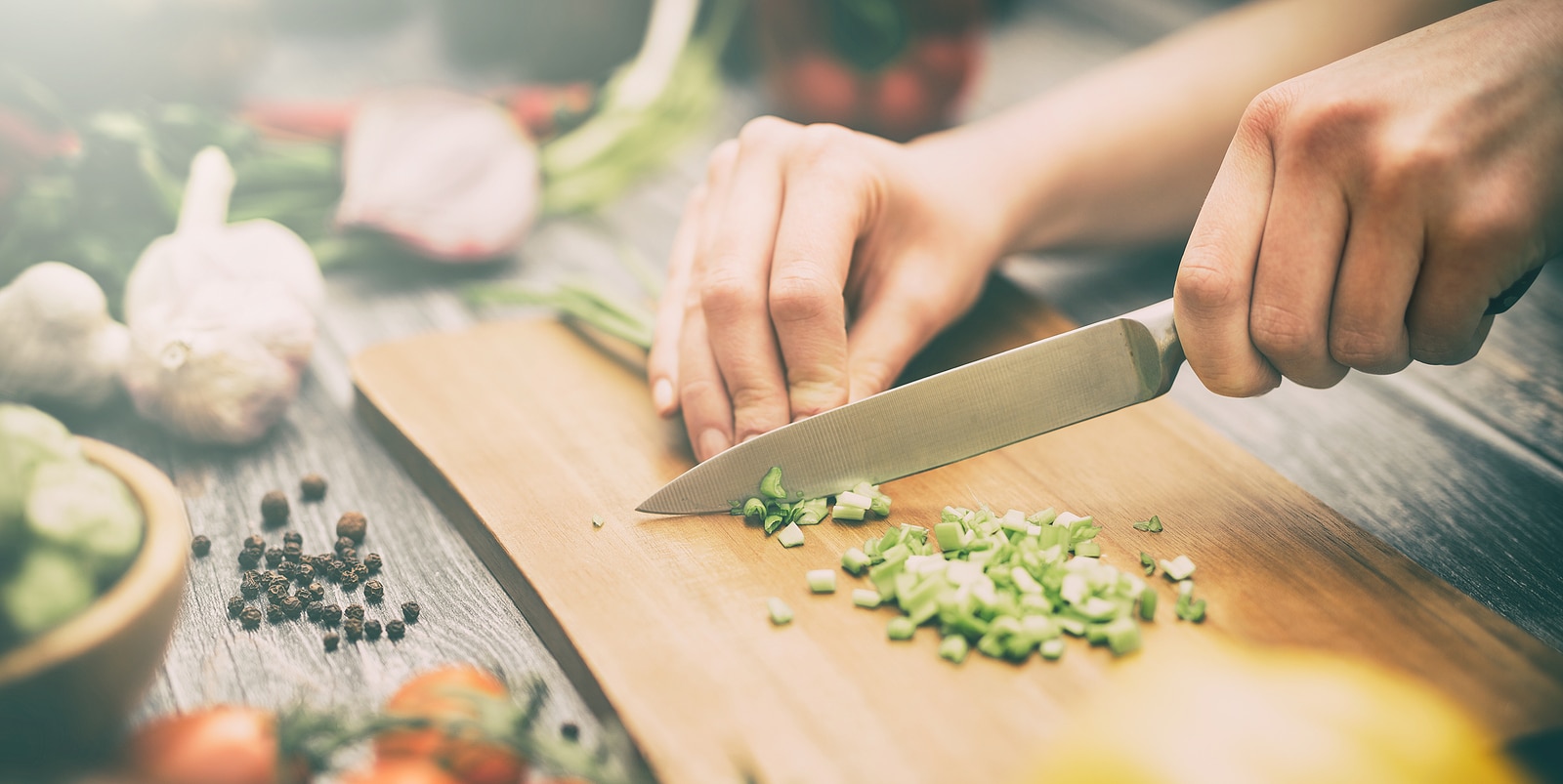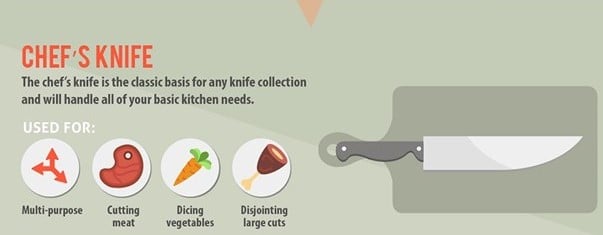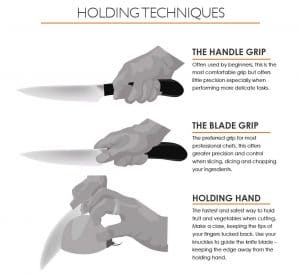As someone who’s been in the trenches of many a kitchen, I know firsthand that having the right knife can make all the difference. Whether you’re a seasoned chef or a home cook ready to up your game, this guide is going to slice through the clutter and help you find the best kitchen knives out there.
Understanding Knife Types
When it comes to selecting the right kitchen knives, it’s essential to understand the different types available and their specific uses. Each knife is designed to perform a particular task efficiently, and knowing the distinctions between them can significantly enhance your culinary experience. Let’s delve into the world of kitchen knives and explore the unique characteristics of each type.
Chef’s Knives
The chef’s knife, also known as a cook’s knife, is the workhorse of the kitchen. With its broad blade and curved edge, it’s incredibly versatile and can handle a wide range of tasks, including chopping, slicing, dicing, and mincing. This all-purpose knife is essential for any cook, whether amateur or professional, and is often the most frequently used knife in the kitchen.
Paring Knives
Paring knives are small, agile knives with a short blade, making them ideal for tasks that require precision and control. They are commonly used for peeling fruits and vegetables, deveining shrimp, and other intricate cutting tasks. The compact size and maneuverability of paring knives make them indispensable for delicate work that requires finesse.
Bread Knives
With their long, serrated blades, bread knives are designed to effortlessly slice through bread without crushing or tearing it. The serrations enable the knife to saw through crusty loaves and delicate pastries with ease, making it an essential tool for anyone who loves baking or enjoys a good loaf of bread.
Utility Knives
Utility knives, as the name suggests, are versatile tools that can be used for a variety of cutting tasks in the kitchen. They typically have a mid-sized blade, making them suitable for jobs that are too small for a chef’s knife but too large for a paring knife. From slicing sandwiches to cutting larger fruits and vegetables, a utility knife is a convenient addition to any kitchen.
Santoku Knives
Originating from Japan, Santoku knives have gained popularity for their exceptional performance in slicing, dicing, and mincing. They feature a distinctive shape with a flat edge and a slight curve at the tip, allowing for precise chopping motions. The indentations along the blade, known as kullens, create air pockets that prevent food from sticking to the knife during use.
By understanding the unique characteristics and intended uses of each knife type, you can make informed decisions when selecting the best kitchen knives for your culinary needs. Whether you’re preparing a gourmet meal or simply enjoying the art of cooking, having the right tools at your disposal can elevate your experience in the kitchen.
What to Look for in a Quality Kitchen Knife
Choosing a quality kitchen knife involves considering various factors that contribute to its performance, durability, and overall suitability for your culinary needs. From blade material to handle comfort, each aspect plays a crucial role in determining the effectiveness and longevity of a knife. Let’s explore the key elements to consider when searching for the perfect kitchen knife.
Blade Material
The material used to craft the blade of a kitchen knife significantly impacts its sharpness, edge retention, and resistance to corrosion. Stainless steel and high-carbon stainless steel are popular choices for their durability and ease of maintenance. High-carbon stainless steel offers enhanced edge retention and sharpness, making it a preferred option for professional chefs and home cooks alike. Additionally, some knives feature Damascus steel, known for its distinctive patterning and exceptional strength, making it a prized material for high-quality blades.
Handle Comfort
The comfort and ergonomics of a knife’s handle are essential for prolonged use and precise control. A well-designed handle should feel comfortable in your hand, providing a secure grip and minimizing hand fatigue during extended periods of use. Look for handles made from materials such as wood, composite materials, or synthetic polymers, as these options offer durability, resistance to moisture, and ergonomic designs that cater to different hand sizes and gripping preferences.
Balance and Weight
A well-balanced knife contributes to its overall maneuverability and ease of use. A balanced knife feels stable and controlled in your hand, allowing for smooth, controlled cutting motions. Consider the weight distribution between the blade and the handle, as a knife with proper balance ensures that the blade does not feel too heavy or too light, enhancing its precision and reducing the strain on your hand and wrist during use.
Knife Edge
The sharpness and maintenance of a knife’s edge are crucial factors that affect its cutting performance and longevity. Different knives feature various edge styles, such as straight edges, serrated edges, or a combination of both. Straight edges are ideal for precise slicing and push-cutting, while serrated edges excel at cutting through tough or delicate foods with minimal crushing. Additionally, some knives feature hollow-ground edges, which reduce friction and prevent food from sticking to the blade during use.
When selecting a quality kitchen knife, it’s essential to consider the interplay of these factors to ensure that the knife meets your specific requirements and preferences. By carefully evaluating the blade material, handle comfort, balance and weight, and knife edge, you can make an informed decision and invest in a kitchen knife that enhances your culinary endeavors and withstands the test of time.
Top Picks for Kitchen Knives
Best Overall Chef’s Knife
The Wusthof Classic 8-Inch Chef’s Knife stands out as the best overall choice for its impeccable balance, razor-sharp edge, and durable construction. Crafted from high-carbon stainless steel, this knife offers exceptional edge retention and precision slicing, making it a favorite among professional chefs and home cooks alike. Its well-designed handle provides a comfortable grip, while its versatile blade excels at a wide range of cutting tasks.
Best Paring Knife
The Victorinox Fibrox Pro 3.25-Inch Paring Knife is a standout choice for its exceptional sharpness, maneuverability, and ergonomic design. Featuring a high-carbon stainless steel blade and a textured, non-slip handle, this paring knife offers precise control and effortless peeling, slicing, and intricate cutting tasks. Its lightweight construction and superior edge retention make it an indispensable tool in any kitchen.
Best Bread Knife
The Mercer Culinary Millennia 10-Inch Bread Knife is renowned for its exceptional serrated edge, comfortable handle, and effortless slicing capabilities. With a long, serrated blade crafted from high-carbon, stain-resistant Japanese steel, this bread knife effortlessly cuts through crusty loaves, delicate pastries, and tough-skinned fruits without crushing or tearing. Its ergonomic handle provides a secure grip and exceptional balance, making it a top choice for bread enthusiasts.
Best Utility Knife
The Shun Classic 6-Inch Utility Knife is a top pick for its exceptional versatility, precision, and elegant design. Constructed from Damascus-clad steel, this utility knife offers remarkable edge retention, a razor-sharp blade, and a stunning, D-shaped Pakkawood handle. Whether you’re slicing sandwiches, cutting vegetables, or tackling in-between tasks, this knife’s performance and craftsmanship make it a valuable addition to any kitchen.
Best Santoku Knife
The Miyabi Birchwood SG2 7-Inch Santoku Knife is a standout choice for its exceptional sharpness, stunning design, and unparalleled cutting performance. Crafted from SG2 micro-carbide powder steel, this Santoku knife boasts an extraordinarily sharp and long-lasting edge, while its exquisite Birchwood handle provides a comfortable and secure grip. With its exceptional balance, precise cutting, and eye-catching aesthetics, this knife is a prized possession for discerning chefs and cooking enthusiasts.
These top picks for kitchen knives exemplify the pinnacle of craftsmanship, performance, and functionality, offering exceptional cutting precision, durability, and comfort. Whether you’re seeking a versatile chef’s knife, a precision paring knife, a reliable bread knife, a multi-purpose utility knife, or a high-performance Santoku knife, these selections represent the finest options available to elevate your culinary experiences.
Caring for Your Kitchen Knives
Proper care and maintenance are essential to ensure that your kitchen knives remain in optimal condition, providing reliable performance and longevity. By implementing the right practices for sharpening, cleaning, and storing your knives, you can preserve their sharpness, prevent damage, and extend their lifespan. Let’s explore the best practices for caring for your kitchen knives to keep them in prime condition.
Sharpening Your Knives
Regular sharpening is crucial to maintain the sharpness and cutting performance of your knives. Using a sharpening stone, honing steel, or electric sharpener, you can restore the edge of your knives to ensure effortless slicing and precision cutting. It’s recommended to hone your knives with a honing steel before or after each use to realign the edge and maintain its sharpness. Additionally, periodic sharpening with a sharpening stone or system is necessary to remove any nicks or dullness that may occur over time, ensuring that your knives remain keen and efficient.
Proper Cleaning and Storage
After each use, it’s essential to clean your knives thoroughly to remove any food residue and prevent corrosion. Hand washing with mild dish soap and warm water is the best approach to maintain the integrity of the blade and handle. Avoid placing your knives in the dishwasher, as the harsh detergents and jostling can lead to damage, dulling, and corrosion. Once cleaned, dry your knives immediately with a soft cloth to prevent water spots and ensure that no moisture remains on the blade or handle.
When it comes to storage, it’s important to protect the sharp edge of your knives to prevent damage and maintain their cutting performance. Using a knife block, magnetic strip, or blade guards, you can safely store your knives to prevent them from coming into contact with other utensils or hard surfaces that could dull the blade. Proper storage not only safeguards the edge but also ensures the safety of anyone handling the knives.
Additionally, it’s advisable to store your knives in a dry and well-ventilated area to prevent moisture buildup, which can lead to corrosion and damage to the blade. Avoid storing knives in a cluttered drawer where they can rub against other utensils, potentially causing nicks and dulling the edge. By implementing these storage practices, you can protect the sharpness and integrity of your knives, ensuring that they remain in prime condition for years to come.
By following these best practices for caring for your kitchen knives, you can maintain their sharpness, durability, and overall performance. With regular sharpening, proper cleaning, and safe storage, you can ensure that your knives retain their cutting precision and longevity, allowing you to enjoy the benefits of high-quality, well-maintained kitchen tools in your culinary endeavors.
Conclusion
In the world of culinary arts, the significance of having the right kitchen knives cannot be overstated. A well-equipped kitchen is incomplete without a set of quality knives that cater to a wide range of cutting tasks, from delicate precision work to robust chopping and slicing. Throughout this exploration of kitchen knives, we’ve uncovered the fundamental aspects that contribute to their functionality, performance, and overall value.
Understanding the diverse range of knife types, including chef’s knives, paring knives, bread knives, utility knives, and Santoku knives, provides us with a comprehensive overview of the specialized roles each knife fulfills. From the versatility of the chef’s knife to the precision of the paring knife and the unique characteristics of the Santoku knife, each type offers distinct advantages that cater to specific culinary needs.
Moreover, delving into the essential considerations for selecting a quality kitchen knife, such as blade material, handle comfort, balance and weight, and knife edge, empowers us to make informed decisions when investing in our culinary tools. By prioritizing these factors, we can ensure that our kitchen knives not only meet our functional requirements but also provide lasting comfort, control, and cutting prowess.
As we conclude our journey through the realm of kitchen knives, it’s evident that the right tools can transform the culinary experience, elevating it from a routine task to an artful expression of creativity and skill. Whether you’re a professional chef crafting intricate dishes or a home cook preparing everyday meals, the significance of having reliable, high-quality knives cannot be overlooked.
In essence, the pursuit of the best kitchen knives is a quest for precision, versatility, and enduring craftsmanship. It’s a journey that involves understanding the nuances of knife types, recognizing the hallmarks of quality, and appreciating the impact that the right tools can have on our culinary endeavors. By embracing this pursuit, we equip ourselves with the means to elevate our cooking experiences, enhance our culinary creations, and savor the art of food preparation with the confidence that only the best kitchen knives can provide.
Frequently Asked Questions
What’s the most important knife to have in the kitchen?
The most important knife to have in the kitchen is a chef’s knife. It’s incredibly versatile and can be used for a wide range of tasks, from chopping and slicing to mincing and dicing. A good chef’s knife with a comfortable grip and a blade that’s about 8 inches long can serve as the workhorse of your kitchen.
How often should I sharpen my knives?
The frequency of sharpening your knives can vary based on how often you use them and what you’re cutting. However, a good rule of thumb is to sharpen your knives every few months or when you notice they’re not performing as well as they should. Honing with a steel can be done more frequently, even every time you use your knife, to maintain the edge.
Can I put my knives in the dishwasher?
It’s generally not recommended to put your knives in the dishwasher. The harsh environment can dull the blades, and jostling can cause them to chip or become damaged. Additionally, the heat and detergent can be detrimental to the handles. Hand washing with mild soap and water and drying immediately is the best way to care for your knives.
What’s the difference between a cheap and an expensive knife?
The difference between a cheap and an expensive knife often lies in the quality of materials, construction, and attention to detail. Expensive knives typically use higher-quality steel, which retains a sharp edge longer and is more resistant to corrosion. They may also have better balance, a more comfortable handle, and a more precise edge. In addition, expensive knives often come with better warranties and customer service.
How do I know when it’s time to replace my kitchen knife?
It’s time to replace your kitchen knife when it no longer holds an edge after sharpening, if the blade is chipped or damaged, or if the handle is cracked or coming apart from the blade. If a knife feels unsafe to use or it’s not performing as it should even after proper maintenance, it’s time for a new one.
Kitchen Knives
From slicing and dicing, to carving and paring, every kitchen needs a professional set of knives. Whether you’re ready to add to your own collection of Japanese knives, or simply looking for a place to start, this guidewill help you make the right choice.
To break it down, we look into the different lengths and types of knives, as well as which ones to use based on your experience in the kitchen.
Chef’s Knife
What is a chef’s knife? See below.
Holding Techniques
What are the proper holding techniques in handling a knife? See image below.

